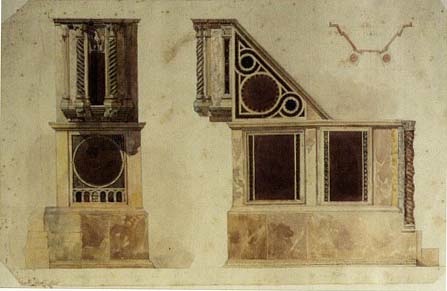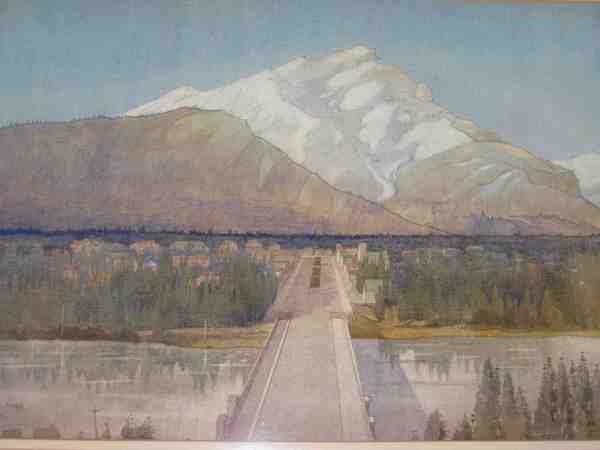Articles and Reviews
Foreword by Neil MacGregor (Director of the British Museum) for the gallery publication Bradshaw Gass & Hope, The Story of an Architectural Practice 1862-1962 - the first one hundred years.
“The archives of an architectural practice are a kind of communal, a record of the daily activity of dozens of people, of their routine tasks, their preoccupations and hopes, their frustrations and triumphs. They offer a glimpse of professional lives as they were actually lived - a glimpse in this particular instance that, beginning in the 1860s, embraces more than a hundred years ... They built all across the United Kingdom, from Leith to Wimbledon; they have been actively engaged with the RIBA, its concerns and its politics; they follow with the closest interest architectural developments in America. But they are from first to last a Bolton firm, rooted in Lancashire and making a deep and lasting contribution to the urban environment across the country.
This splendid archive, revealed in its depth, length and detail by the energetic scholarship of Jane and Timothy Lingard, is a chance to see a century of national history through the eyes of practical Lancashire professionals. The view from Bolton is wide-ranging and instructive. The Bradshaw Gass & Hope Archive deserves to be better known". (Neil MacGregor, Director of the British Museum).
.jpg)
Bradshaw Gass & Hope, Cottages at Port Sunlight, 1904-6: perspective by Roger Oldham
Reviews of the Bradshaw Gass & Hope publication
“From these reccords and archives, architectural historians Timothy and Jane Lingard have wirtten a definitive history of the practice’s first 100 years using many of the marvellous watercolours and drawings". (The Bolton News, 22 June, 2007)
“In their book Jane and Timothy Lingard trace the first hundred years of the practice, drawing on the extensive and detailed archive that the firm has retained... The Lingard’s book is thorough and features plenty to keep the reader’s attention both in terms of the text and the fine illustrations, photographs and elevations ... this book is long overdue and does justice to a firm of architects who, especially in the North West, have left a legacy of attractive and commending civic buildings." (Twentieth Century Society Magazine, Winter edition, 2007-8).
.jpg)
Bradshaw Gass & Hope, Le Mans Crescent, Bolton: perspective by P D Hepworth 1923
Foreword of Sir Matthew Digby Wyatt exhibition catalogue by Lord Wyatt of Weeford
Matthew Digby Wyatt (1820-1877) would have greatly enjoyed meeting the Lingards. They share his meticulous attention to detail and accuracy - and, of course, their love of architectural history. Sir Matthew, like most of the other twenty seven architects in my family, was skilled at drawing and painting. A close of friend of Edward Lear, with whom he often painted or drew, his subjects were frequently not architectural. Probably he got the idea of the Specimens, a publication on the applied arts, from his cousin, John Wyatt III (1752-1818). His Repository of Arts, published annually from 1794 to seven years after his death, was the first in this field. There are delightful originals from Specimens in this exhibition.
The Lingards are remarkable discoverers in their chosen periods Visitors to this exhibition will be glad to have discovered them. Young, enthusiastic, knowledgeable and adventurous, they have many new ideas for fascinating and unusual exhibitions waiting to flower. (Lord Wyatt of Weeford)

Sir Matthew Digby Wyatt (1820-1877), Marble and mosaic Pulpit in Santa Maria in Aracoeli, Rome, 1845: elevations and plan, signed and dated.
Foreword of Thumbnotes & Masterpieces by Cyril Farey (1888-1954) exhibition catalogue by Sir Hugh Casson, CH, KCVO, PPRA, RDI
This exhibition of work by Cyril Farey mounted by the Lingard Gallery concentrates not so much on the skilful portraits of buildings designed by others, which year after year dominated the Architectural Room at the RA Summer Exhibition and for which he was so celebrated, but on the sketches and studies made for his own pleasure. Here he escapes from the professional cage he built for himself as a perspectivist. Here he is his own client, every subject, every view point is self-chosen, and warmed by personal affection. His sharp eye and technical virtuosity with brush and paper - somehow he always manages to make the paper work for its living by atching and holding the light - are relaxed, but the subjects never lose their authority and their sense of weight and of repose.
Quite rightly these sketches form the major content of this exhibition of his work - for it is in these studies he learned to discipline his eye and even to play the game sometimes of using suggestion and hint rather than meticulous recording.
He was a happy and modest man. He enjoyed doing what he did. He did it well and he shares his enjoyment with us. I am sure this exhibition will be widely acclaimed.

Cyril A Farey (1888-1954), Panoramic View of Banff,1927, Canada, signed, dated & inscribed
Exhibition Reviews
Sir Matthew Digby Wyatt Exhibition
If you mention the words 'Wyatt' and 'architecture' to most people, they will probably think of James Wyatt, the younger rival and supplanter of Robert Adam and architect of that ephemeral Gothic extravaganza, Fonthill Abbey. James, however, was but one of an extraordinary family which, in 150 years, produced 28 architects and 10 sculptors, painters and carvers. One of its most eminent later scions was Sir Matthew Digby Wyatt (1820-1877) a selection of whose drawings will be exhibited by Gallery Lingard.
Described by a contemporary as '... most distinguished combination of the literary man with the architectural investigator and practical administrator', he was an intimate of the Prince Consort, Secretary of the Great Exhibition Committee and executant architect of the Crystal Palace. His architecture was eclectic and his best known work today is probably the architectural decoration of Paddington Station (1850-55), designed with Owen Jones, and the India Office in Whitehall (1861-68), with George Gilbert Scott.
Gallery Lingard is exhibiting a collection of architectural sketches, mostly executed in the 1840s, when Digby travelled around Europe studying the principal buildings in France, Germany and Italy. They form an important record of the visual resources from which Digby was later to derive his informative and adaptable attitude to style.
Apart from John Martin Robinson's consideration of Digby's career as part of his survey of the entire dynasty, The Wyatts (1979), there has been little evaluation in modern times of Digby's importance. It is thus to be welcomed that the exhibition is accompanied by an illustrated biographical catalogue (Charles Hind, current H J Heinz Curator of the RIBA Drawings Collection)
Trad Jazz & Mod Exhibition
Gallery Lingard have a very pleasing show ... under the title of Trad Jazz & Mod it evokes powerfully the mix-and-match architecture of the Twenties and Thirties"
The Times, December 1986
Greeks and Goths Exhibition
Gallery Lingard mounts yet another of its intriguing architectural specialities this time under the title Greeks and Goths.
The Antique Dealer and Collectors’Guide, May 1987
Capital Buildings Exhibition
Gallery Lingard has made another splendid exhibition again, this time of architectural designs and topograhical views of London"
Arts Review, December 1987
Great Goths Exhibition
"Gallery Lingard is showing a remarkable selection of drawings ... by all the giants of the Gothic revival ..."
The Artist, May 1988
William Walcot Artist-Architect Exhibition
“... with their usual pertinacity Gallery Lingard have tracked down awide selection of Walcot’s work ..."
The Architects Journal, May 1990
William Walcot 'Magical Impressions' Exhibition
“Gallery Lingard has just issued a catalogue devoted to the work of William Walcot ... This charming catalogue ... illlustrated with black and white as well as colour plates, offers a fine review of the artist’s work".
Drawing, July-August 1990
